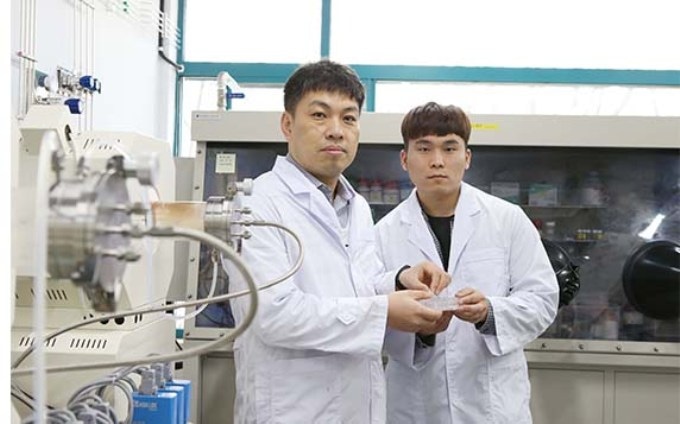Jan 29 2019
A research team from KAIST has created ultra-stable, high-rate lithium-sulfur batteries (LSBs) by making use of hierarchical porous titanium nitride as a sulfur host, and realized excellent cycle stability and improved performance for LSBs.
 From left: Professor Jinwoo Lee and PhD candidate Won-Gwang Lim. (Image credit: KAIST)
From left: Professor Jinwoo Lee and PhD candidate Won-Gwang Lim. (Image credit: KAIST)
The regulation of large amounts of energy is necessary for use in a smart grid system or an electric vehicle. In this regard, there is a high demand for the manufacture of next-generation secondary batteries. In theory, LSBs have an energy density seven times greater than commercial lithium-ion batteries (LIBs). Furthermore, their production cost can be greatly decreased since sulfur can be acquired cheaply.
Regardless of these positive aspects, there have been a number of issues hindering the commercialization of LSBs, for example, the dissolution of active materials while working, the low electric conductivity of sulfur, and slow conversion reactions. These problems reduce the batteries’ cycle stability and rate capability.
To handle those problems, Professor Jinwoo Lee from the Department of Chemical and Biomolecular Engineering and his team produced a well-built hierarchical macro/mesoporous titanium nitride as a host material for sulfur. The titanium nitride has a high electrical conductivity and a high chemical affinity for sulfur. Therefore, it stops the dissolution of active materials and simplifies the charge transfer. Furthermore, the synergistic effect of mesopore and macropore structures enables the steady accommodation of large quantities of sulfur and facilitates the penetration of electrolyte.
Although formerly reported polar inorganic materials possess a high affinity for sulfur, it was difficult to regulate the porous architecture applicable to the sulfur host. This study breaks such boundaries by forming a synthetic route to effortlessly manipulate the porous architecture of inorganic materials, which led to attaining greater cycle stability and high rate capabilities.
Some problems still remain in commercializing LSBs as next-generation batteries. Hence, there should be a continued research on this matter to solve the issues. Through this research, we secured a key technology for ultrastable, high-rate LSBs.
Jinwoo Lee, Professor, Department of Chemical and Biomolecular Engineering, KAIST.
This study was headed by PhD candidate Won-Gwang Lim who collaborated with Jeong Woo Han from POSTECH. It was selected as the cover article of the January 15th, 2019, issue of Advanced Materials.